The history of coffee can be traced back to the Ethiopian highlands in the 11th century. From there, it spread to the Arabian Peninsula, where it was developed into a popular beverage and cultivated. The first coffeehouse was opened in Istanbul in the 16th century and coffee quickly spread throughout Europe, reaching the Americas by the 17th century. Coffee has since become a staple drink in many cultures and a major global industry.
ARRIVES IN ENGLAND
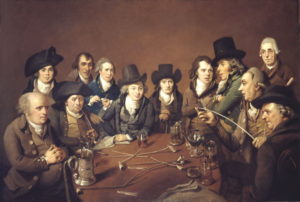
Coffee Shop In Oxford 1652
Coffee first arrived in England in the mid-17th century. It was introduced by traders and travelers who brought back samples of the exotic drink from the Middle East and introduced it to the British public. The first coffeehouse in England was established in Oxford in 1650, and by the end of the 17th century, coffeehouses had become a popular gathering place for intellectuals, artists, and politicians.
MAKES IT TO U.S.
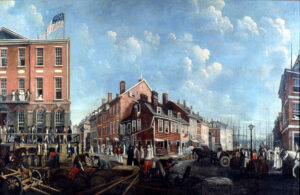
Tontine Coffee House (with flag) established 1793 in Manhatten by stockbrokers
Coffee was introduced to the United States in the early 1700s. The first coffee plant was brought to America from France in 1723 and was planted in Martinique. The first coffeehouse in America was opened in Boston in 1676, and the popularity of coffee quickly spread throughout the colonies. By the late 1700s, coffee had become a staple drink in America and a major industry was established, with beans being imported from countries such as Brazil, Colombia, and Jamaica.
LEADING COFFEE CONSUMPTION
As of 2021, the country that consumes the most coffee is Finland, with a per capita consumption of approximately 12 kilograms per year. Other countries with high coffee consumption include Norway, Iceland, Denmark, and the Netherlands.
LEADING COFFEE PRODUCERS
As of 2021, the country that produces the most coffee is Brazil, producing approximately 26% of the world’s coffee supply. Other top coffee-producing countries include Vietnam, Colombia, Indonesia, and Ethiopia.
Only place coffee is grown in U.S. is Hawaii
A great choice for Hawaiin Coffee
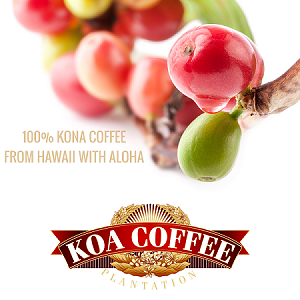
More Info HERE
As of 2021, there were approximately 33,000 coffee shops in the United States. The coffee shop industry has seen significant growth in recent years, with an emphasis on specialty coffee and unique experiences. The growth of the coffee shop industry has also been driven by an increase in consumer demand for convenient and high-quality coffee options.
The best way to brew coffee depends on personal taste preferences and the type of coffee being brewed. Some popular brewing methods include:
- Drip coffee makers: An easy and convenient way to brew coffee, particularly for larger quantities.
- French press: A method that involves steeping coarse coffee grounds in hot water and then separating the grounds from the liquid.
- Aeropress: A handheld device that uses pressure to brew a concentrated and smooth coffee.
- Pour over: A manual brewing method that involves pouring hot water over a filter filled with coffee grounds.
- Moka pot: A stovetop espresso maker that produces a strong and flavorful coffee.
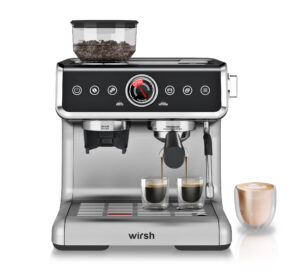
Espresso Equipment And Accessories
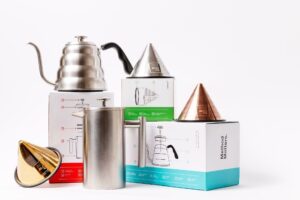
Ultimately, the best way to brew coffee is to experiment and find what method and combination of variables (e.g. grind size, water temperature, etc.) produces the desired flavor and strength.


Great article on coffee. Didn’t know this.
Very interesting article on coffee. I love to try different coffee machines and coffees,
Interesting that coffee was introduced to England in the 1600s, but tea is still the preferred drink there. When I went to London, I was surprised that it was hard to find a good cup of coffee, but tea was everywhere.
Slowly changing coffee shops popping up everywhere
Awesome info about coffee Didn’t realize it’s been around so long.
Thanks for the info.